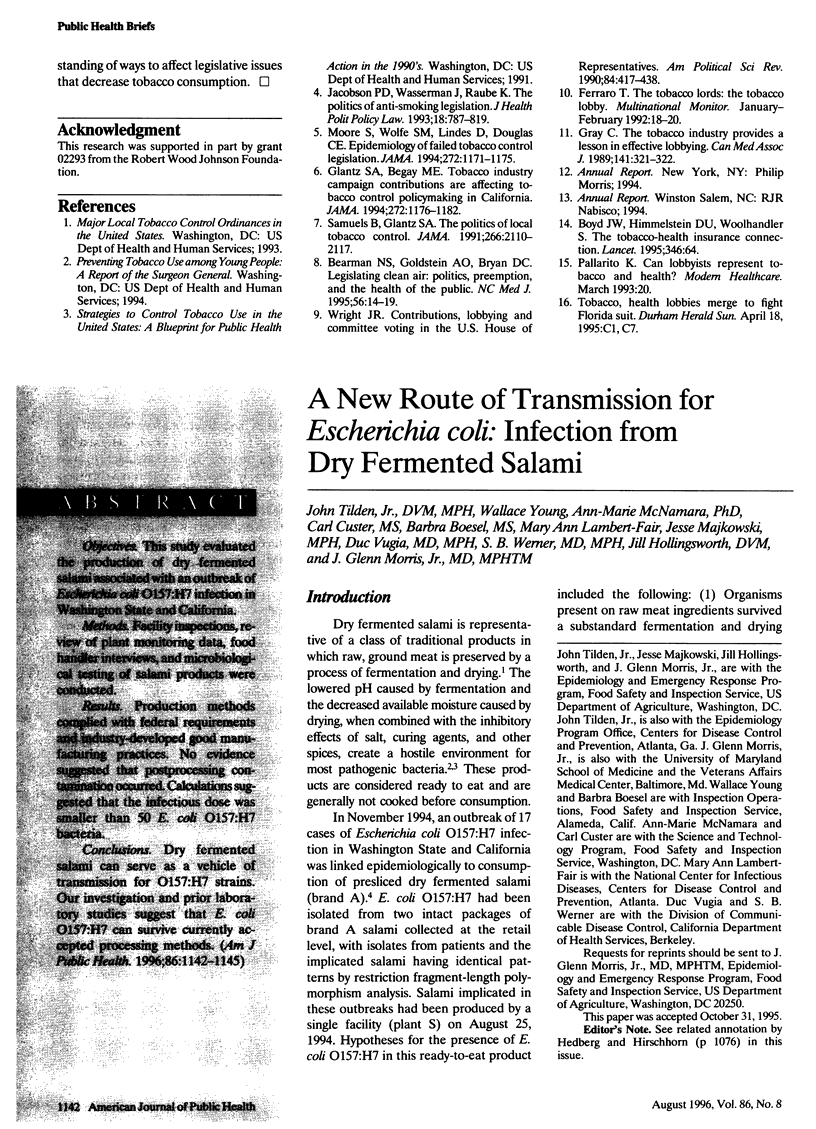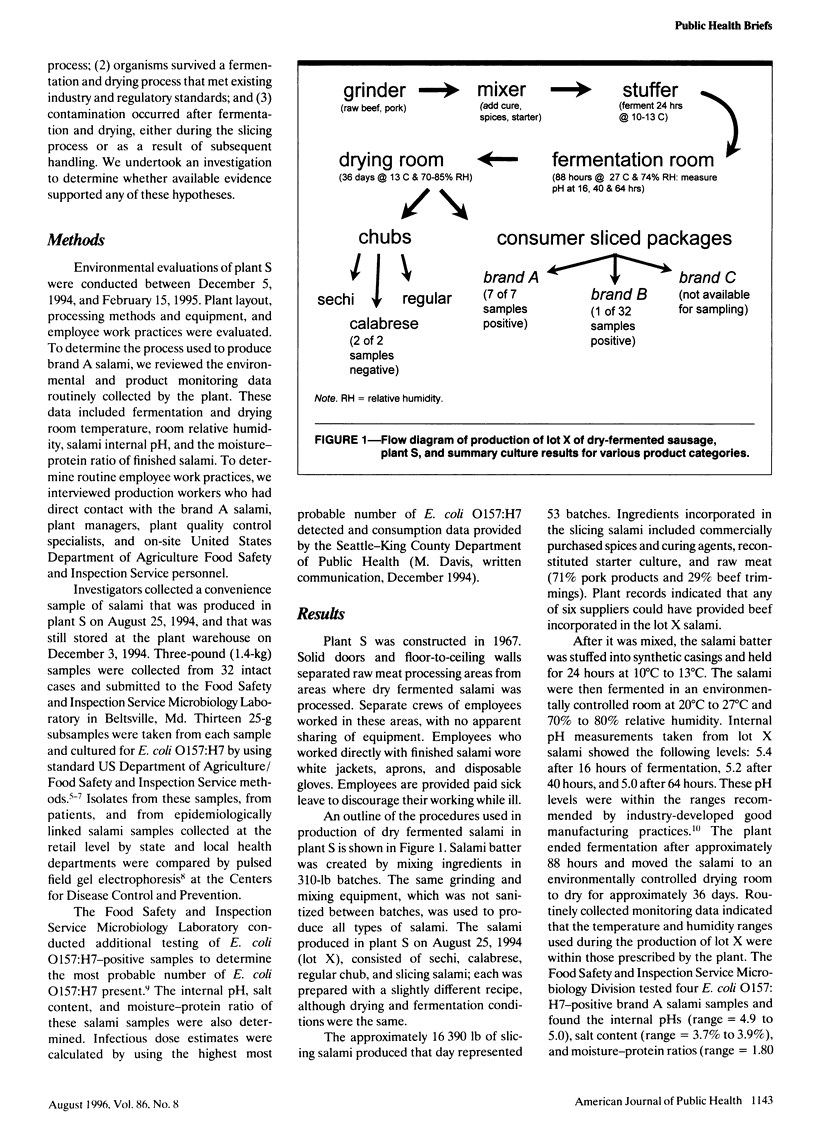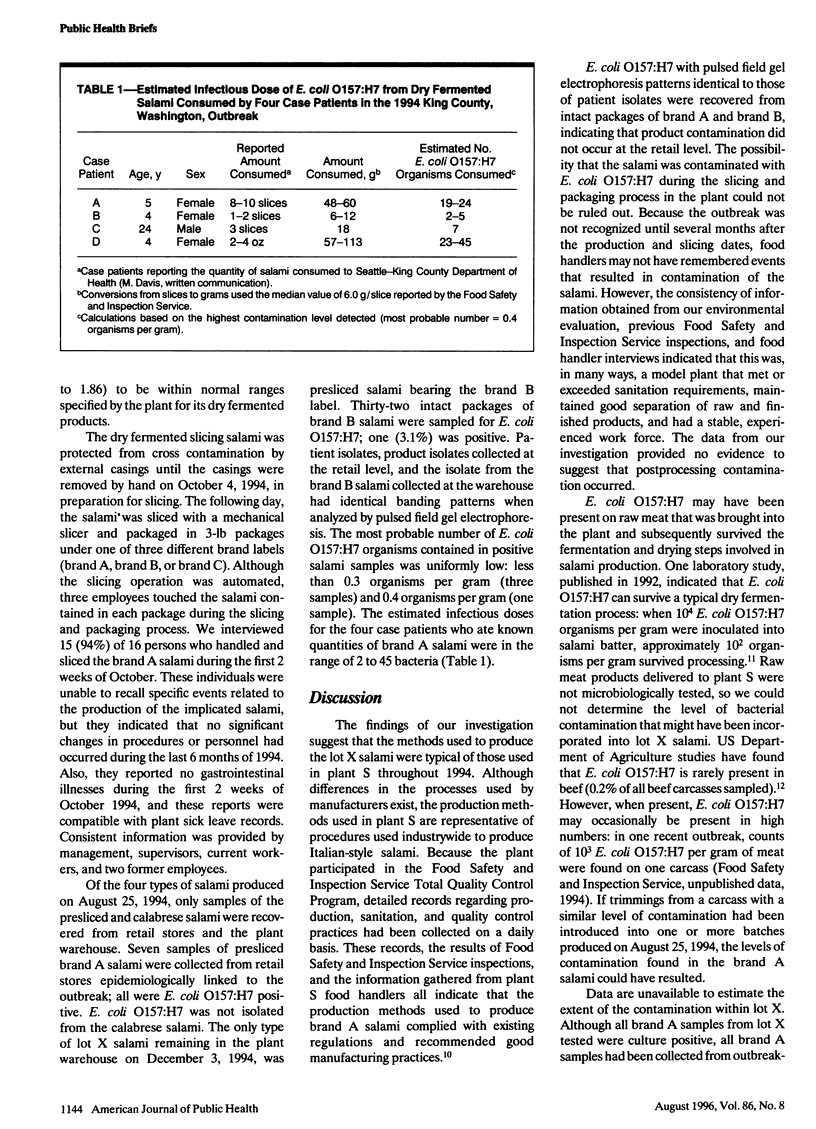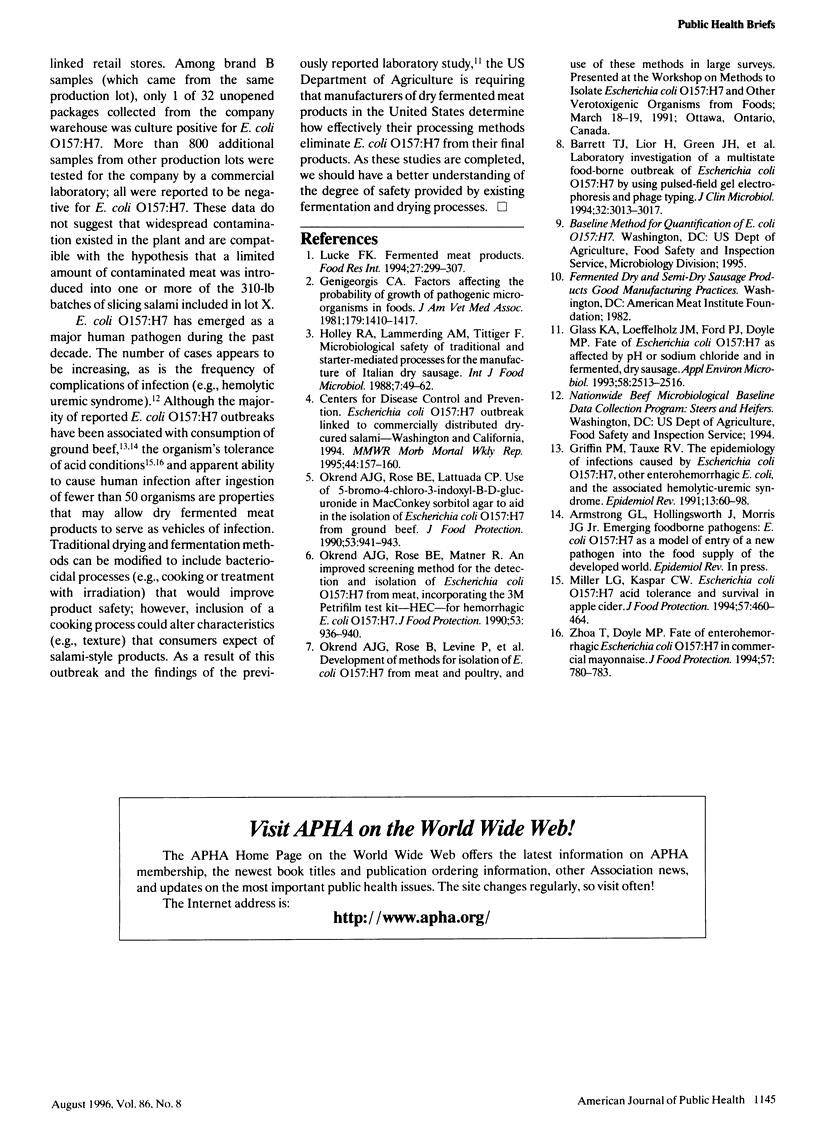Abstract
OBJECTIVES. This study evaluated the production of dry fermented salami associated with an outbreak of Escherichia coli O157.H7 infection in Washington State and California. METHODS. Facility inspections, review of plant monitoring data, food handler interviews, and microbiological testing of salami products were conducted. RESULTS. Production methods complied with federal requirements and industry-developed good manufacturing practices. No evidence suggested that postprocessing contamination occurred. Calculations suggested that the infectious dose was smaller than 50 E. coli O157:H7 bacteria. CONCLUSIONS. Dry fermented salami can serve as a vehicle of transmission for O157:H7 strains. Our investigation and prior laboratory studies suggest that E. coli O157:H7 can survive currently accepted processing methods.
Full text
PDF



Selected References
These references are in PubMed. This may not be the complete list of references from this article.
- Barrett T. J., Lior H., Green J. H., Khakhria R., Wells J. G., Bell B. P., Greene K. D., Lewis J., Griffin P. M. Laboratory investigation of a multistate food-borne outbreak of Escherichia coli O157:H7 by using pulsed-field gel electrophoresis and phage typing. J Clin Microbiol. 1994 Dec;32(12):3013–3017. doi: 10.1128/jcm.32.12.3013-3017.1994. [DOI] [PMC free article] [PubMed] [Google Scholar]
- Genigeorgis C. A. Factors affecting the probability of growth of pathogenic microorganisms in foods. J Am Vet Med Assoc. 1981 Dec 15;179(12):1410–1417. [PubMed] [Google Scholar]
- Glass K. A., Loeffelholz J. M., Ford J. P., Doyle M. P. Fate of Escherichia coli O157:H7 as affected by pH or sodium chloride and in fermented, dry sausage. Appl Environ Microbiol. 1992 Aug;58(8):2513–2516. doi: 10.1128/aem.58.8.2513-2516.1992. [DOI] [PMC free article] [PubMed] [Google Scholar]
- Griffin P. M., Tauxe R. V. The epidemiology of infections caused by Escherichia coli O157:H7, other enterohemorrhagic E. coli, and the associated hemolytic uremic syndrome. Epidemiol Rev. 1991;13:60–98. doi: 10.1093/oxfordjournals.epirev.a036079. [DOI] [PubMed] [Google Scholar]
- Holley R. A., Lammerding A. M., Tittiger F. Microbiological safety of traditional and starter-mediated processes for the manufacture of Italian dry sausage. Int J Food Microbiol. 1988 Aug;7(1):49–62. doi: 10.1016/0168-1605(88)90072-4. [DOI] [PubMed] [Google Scholar]


